Head west on Bluemound Road in Milwaukee – once an Indian trace, later an early paved road – and before long you arrive at Calvary Cemetery. The entrance is easy to spot, though my shot is from inside.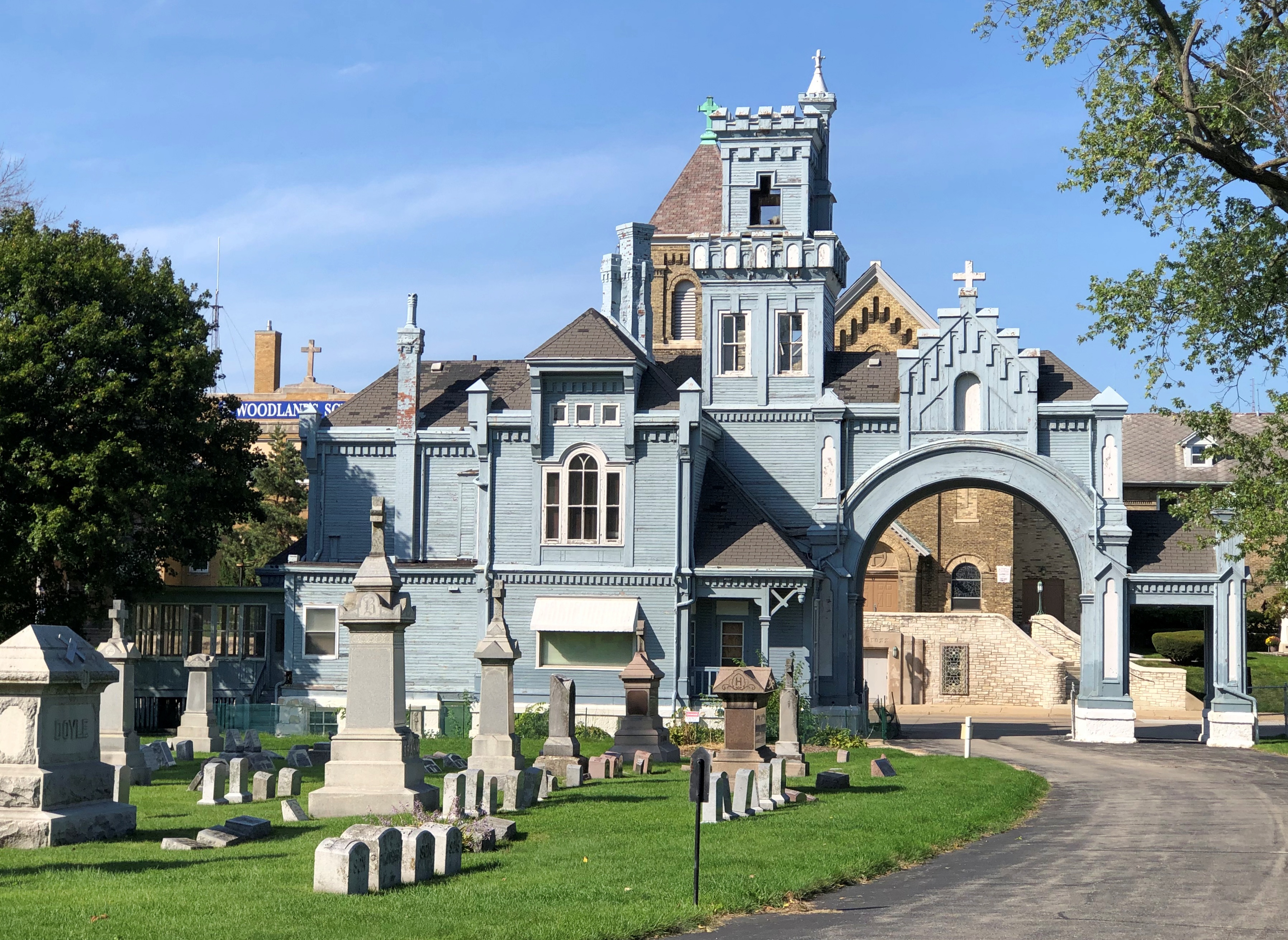
It’s Milwaukee’s oldest Catholic cemetery, counting as a rural cemetery, as it was outside the young city in the 1850s. About 80,000 people repose there these days, including the first mayor of Milwaukee, Solomon Juneau.
I didn’t see his grave. But there were a lot of others, varying in style, age, condition and carved sentiment. The ground has contour and the trees are mature. Everything you need for a picturesque cemetery.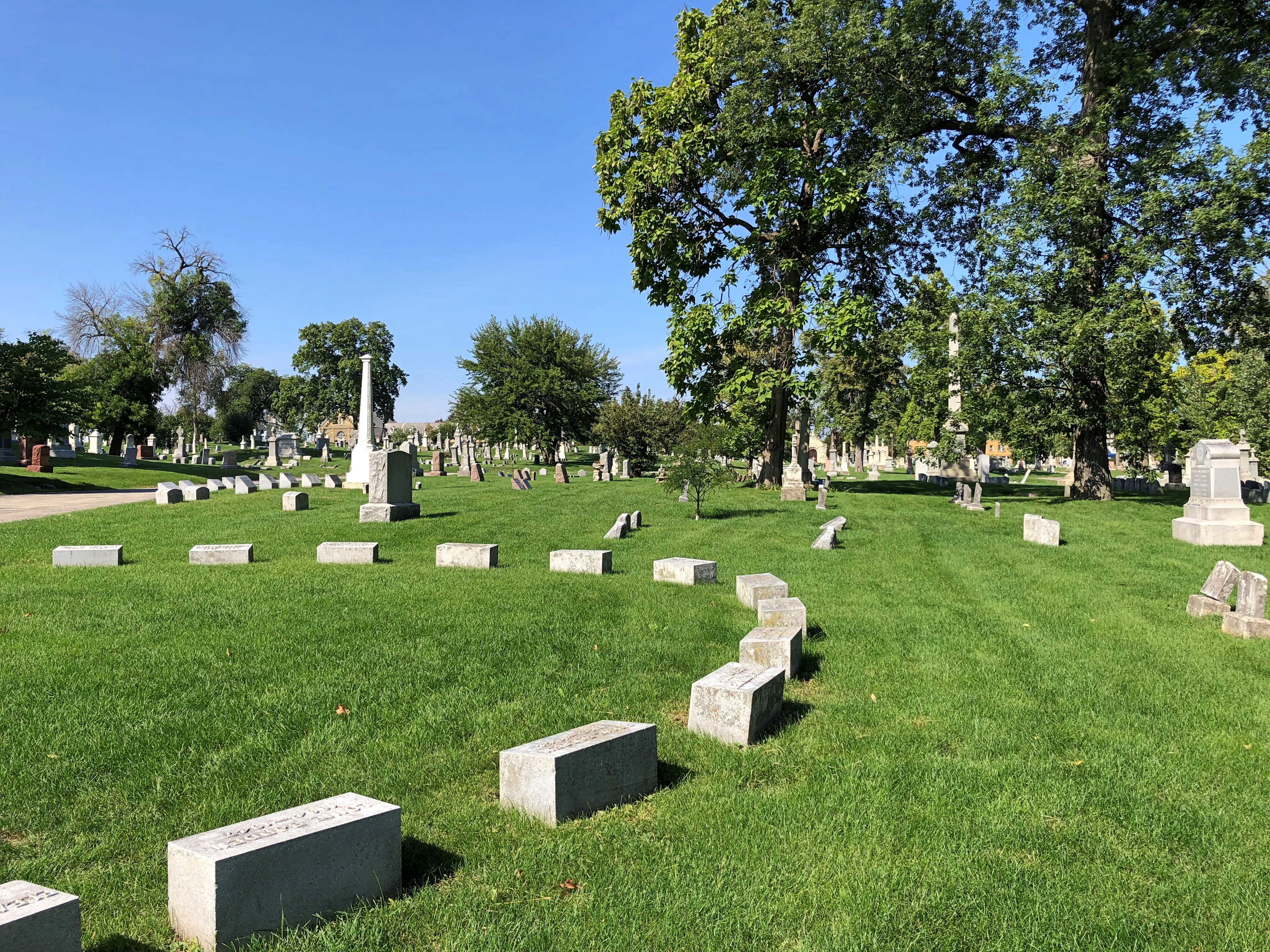

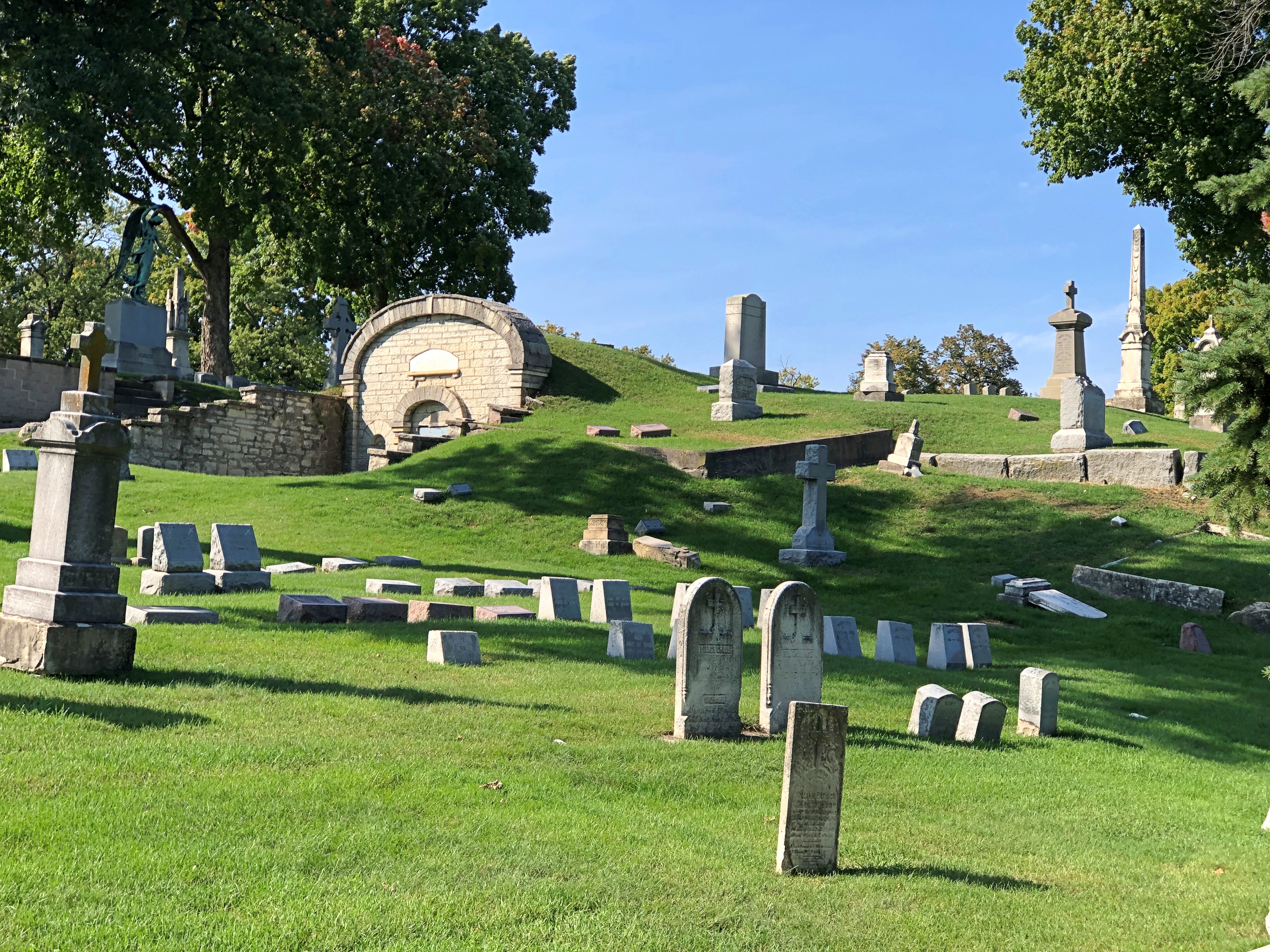
Including some sizable art and a handful of mausoleums.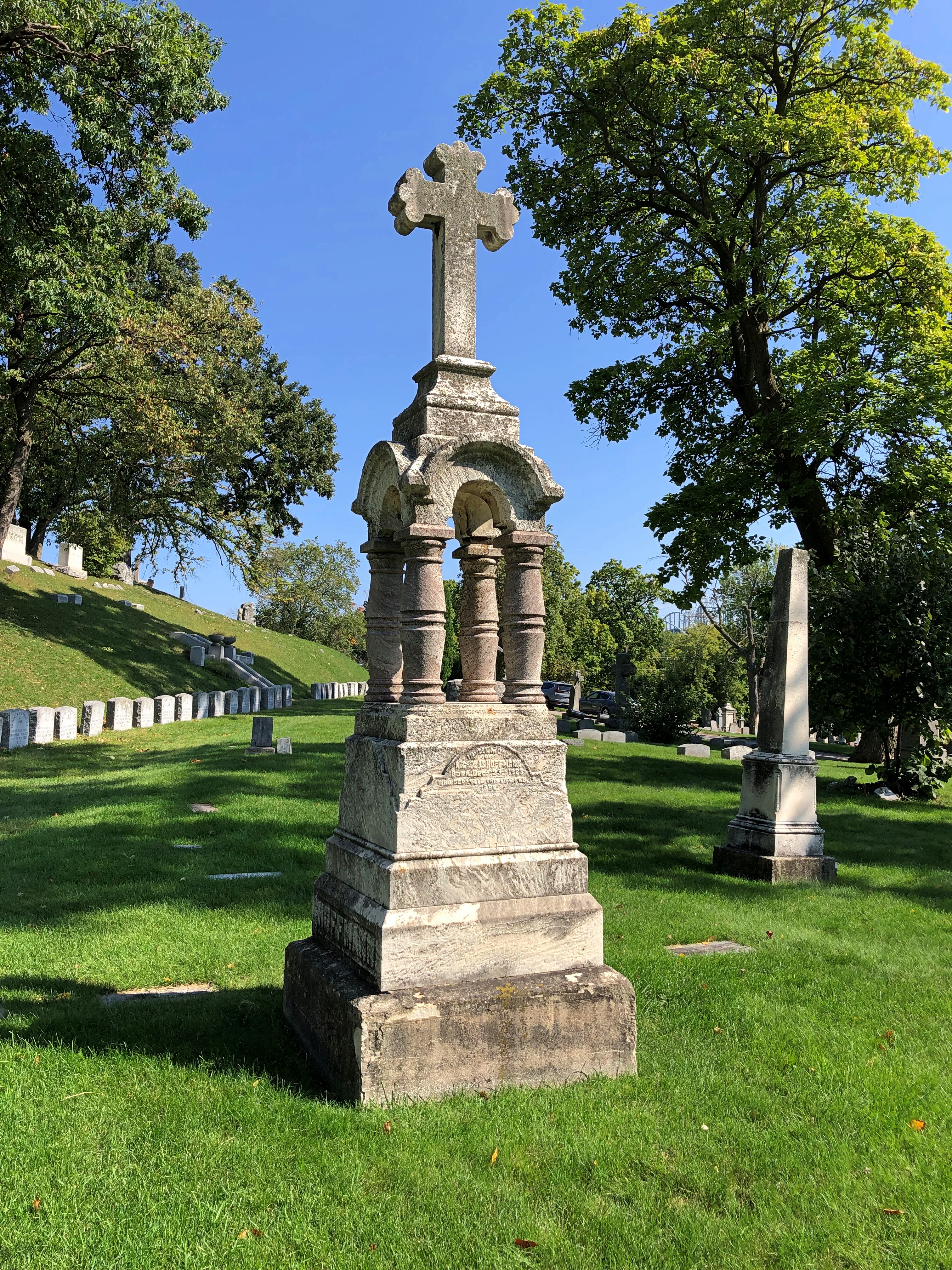
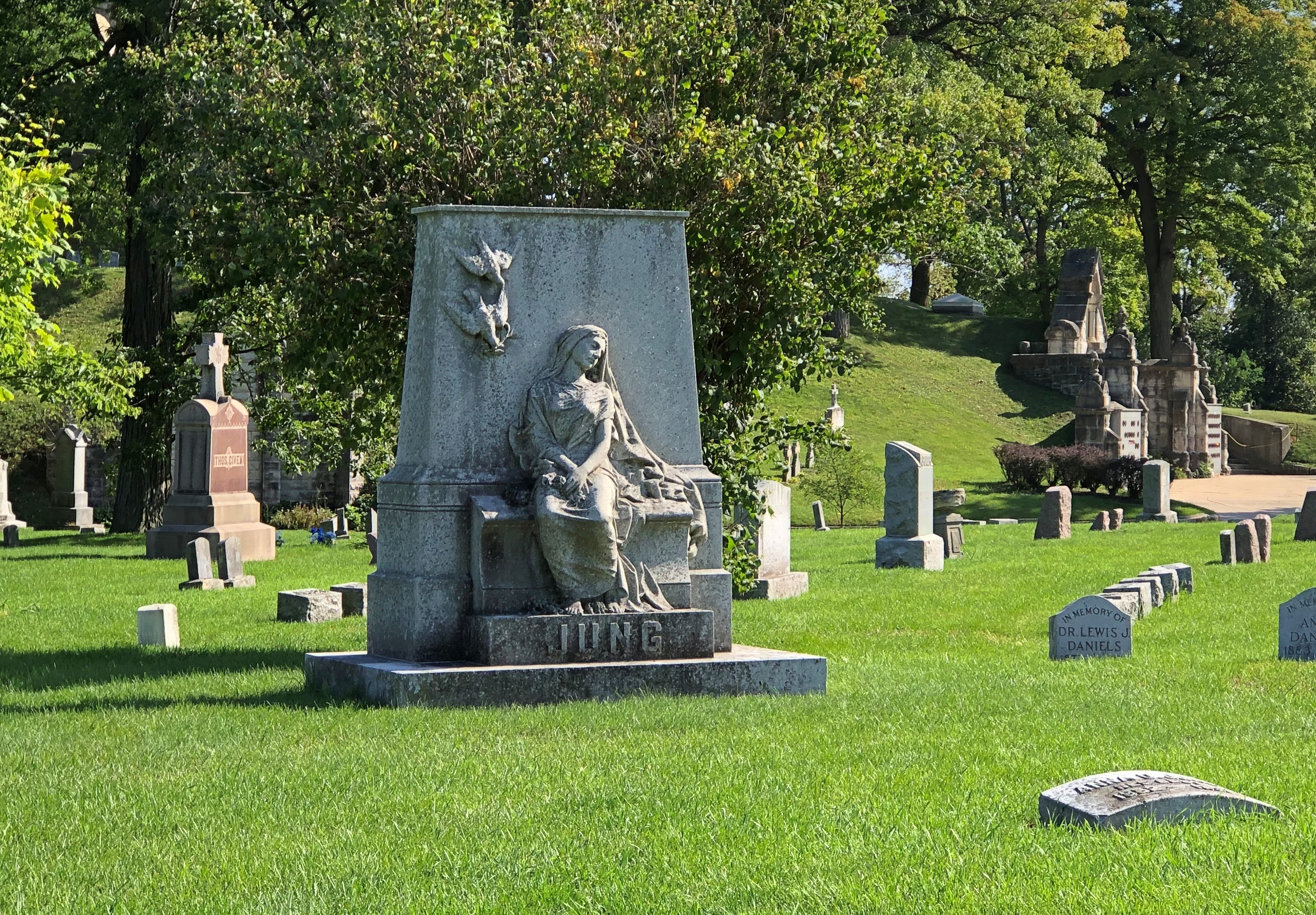
That’s the stone of the Jung family, early Milwaukee brewers. What was it Jung said about beer being the royal road to the unconscious? No, that was that other Milwaukee brewer, Ziggy Freud. I believe they were rivals.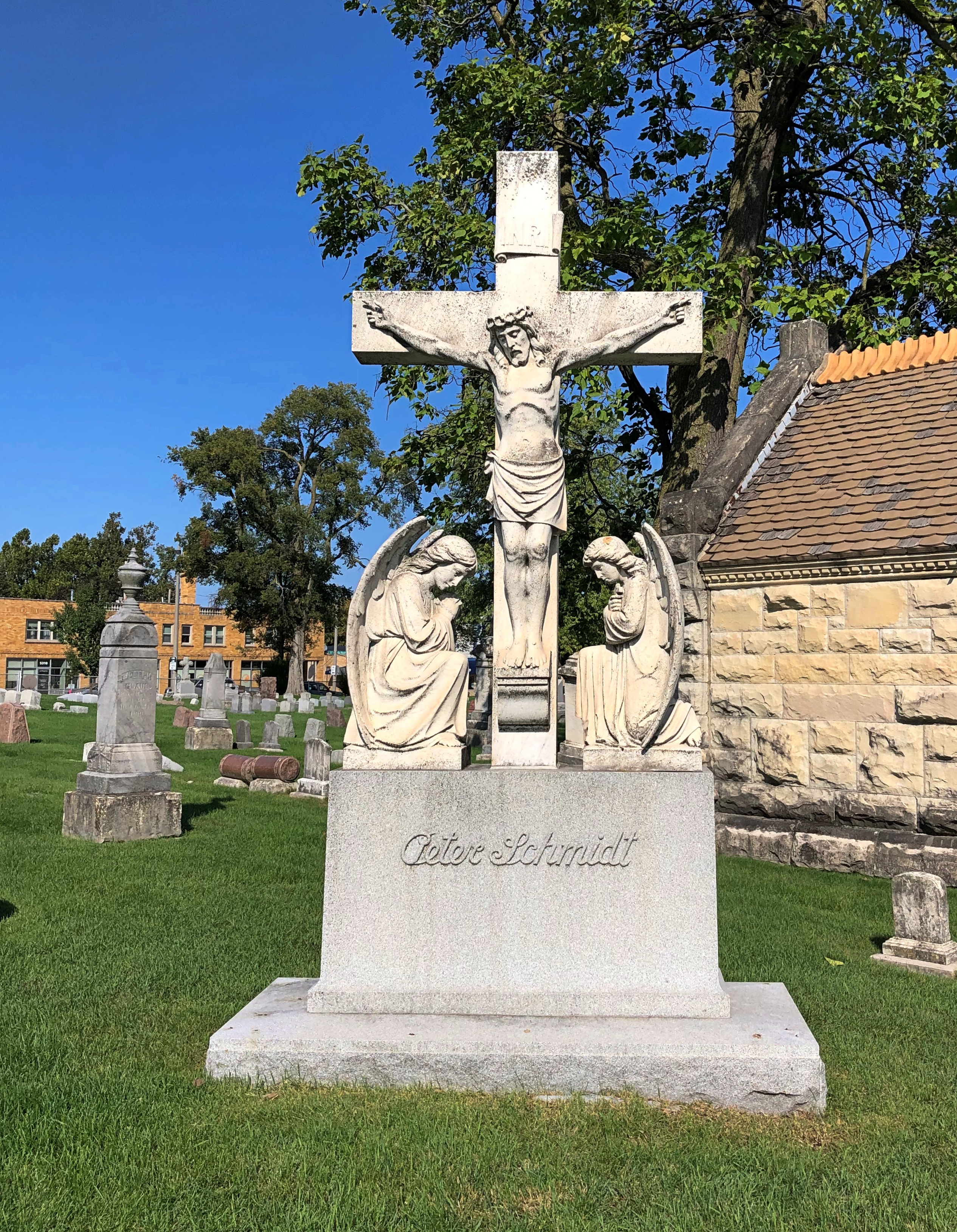
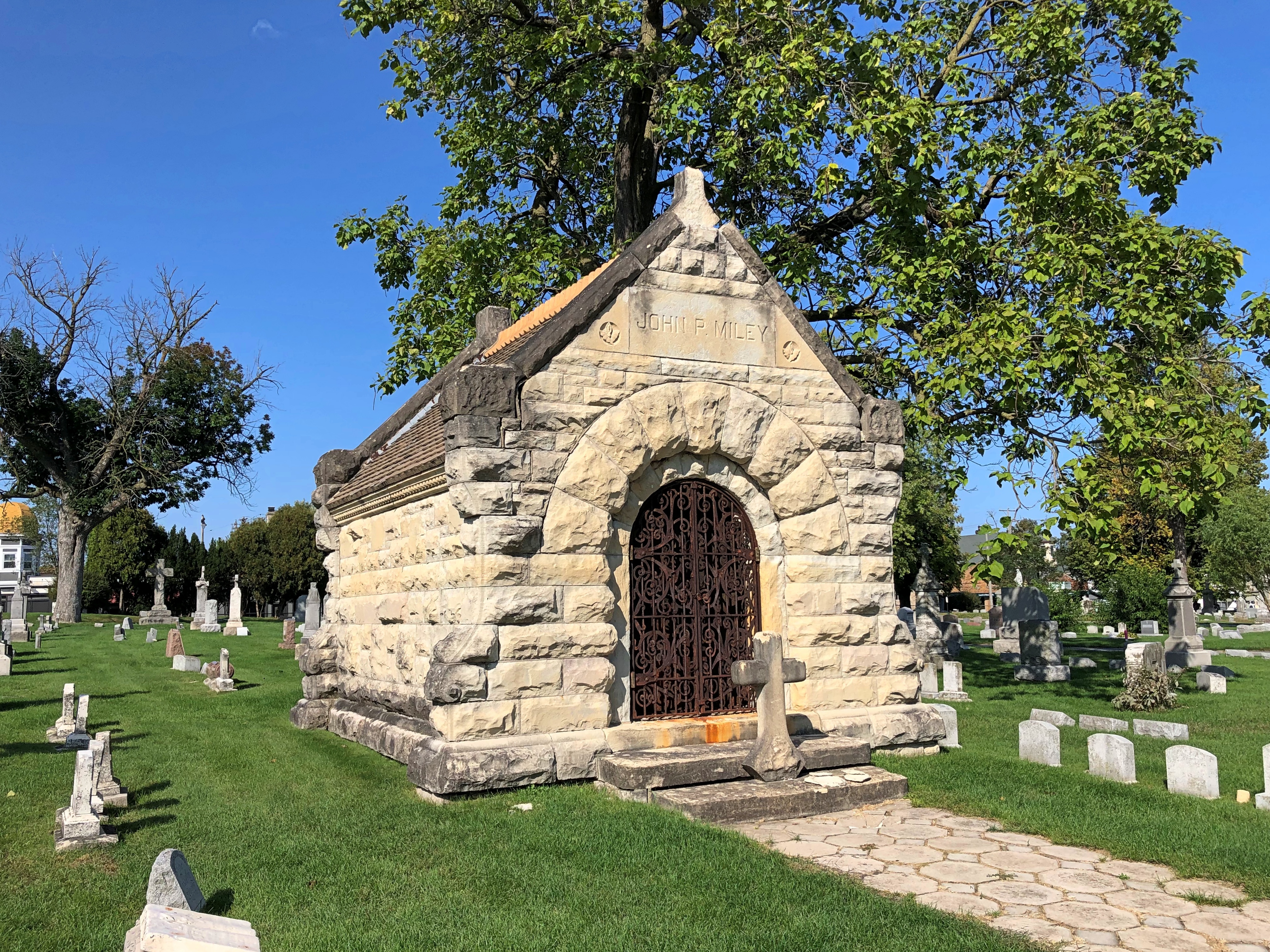
A good number of priests are buried at Calvary, including some fairly recent internments, such as this long row of Jesuits.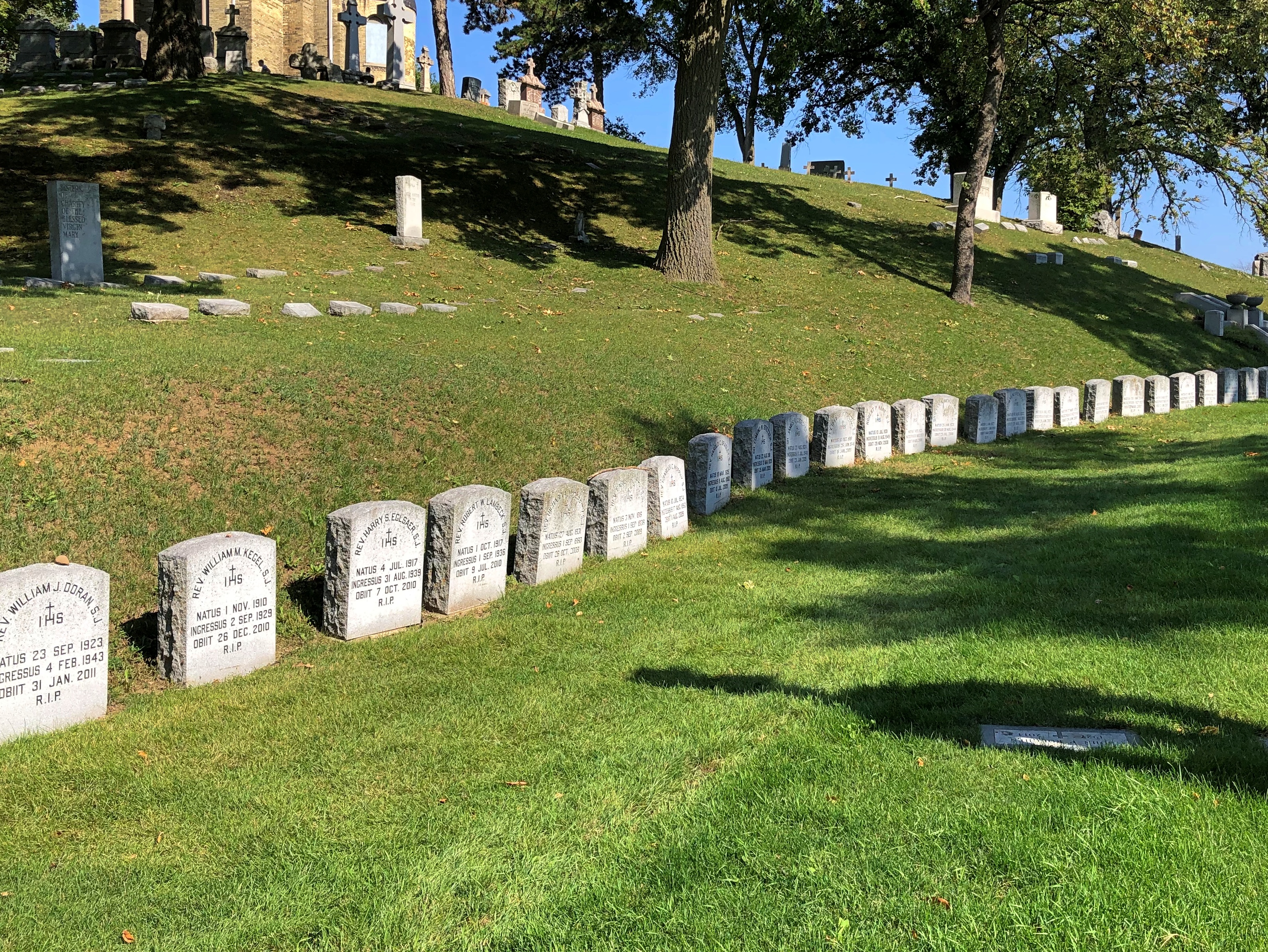

More Jesuits. A wall of Jesuits, with room for a few more.
The cemetery was unusually busy for a cemetery, because it was on the Doors Open Milwaukee list. Not for the grounds or stones, but for the chapel atop the fittingly named Chapel Hill.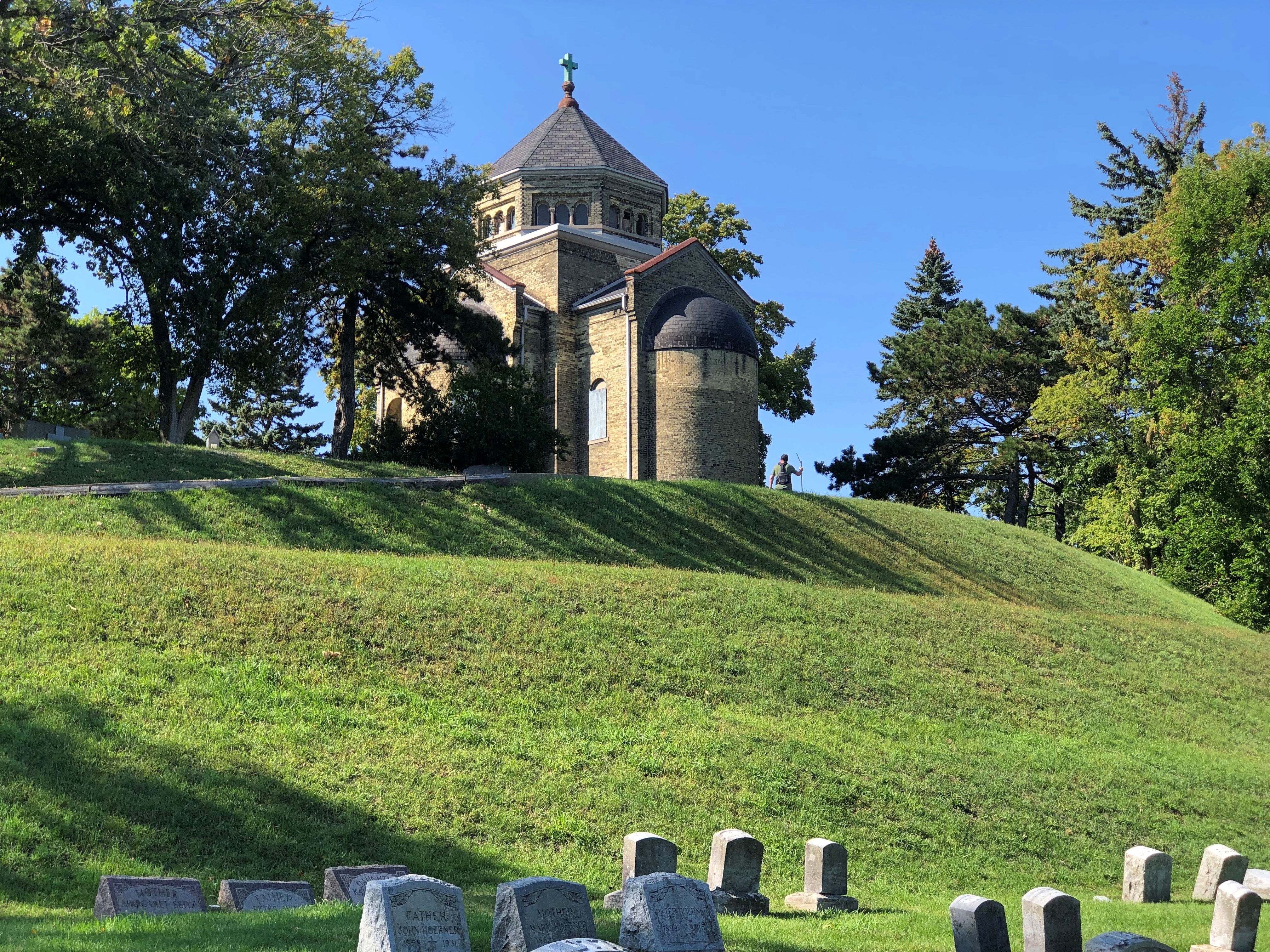
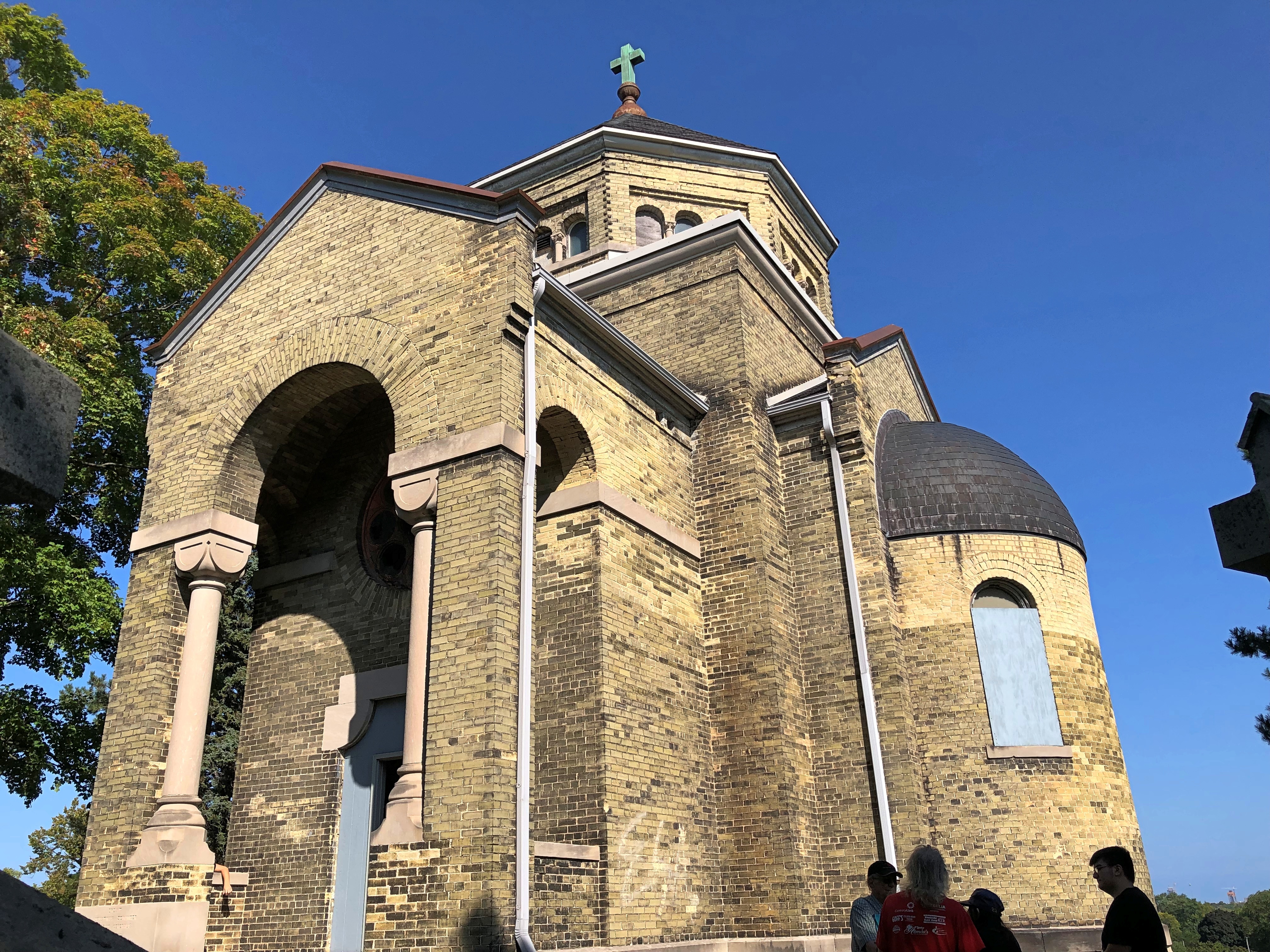

“This cream brick Romanesque style chapel was designed by architect Erhard Brielmaier and built in 1899,” says Historic Milwaukee. “A noted designer of Catholic churches around the country, Brielmaier also designed the famous St. Josaphat on the city’s south side, under construction at the same time. The chapel is located on one of the highest elevations in the city with impressive views of Story Hill, Miller Park and the downtown skyline.”
A nonprofit, the Friends of Calvary Cemetery, is overseeing the long and expensive restoration of the chapel. Some decades ago, the Archdiocese had planned to tear it down, but fortunately preservationists prevailed. Members of the Friends showed visitors around the inside on Saturday. We had to sign a waver in case a piece of it fell on us.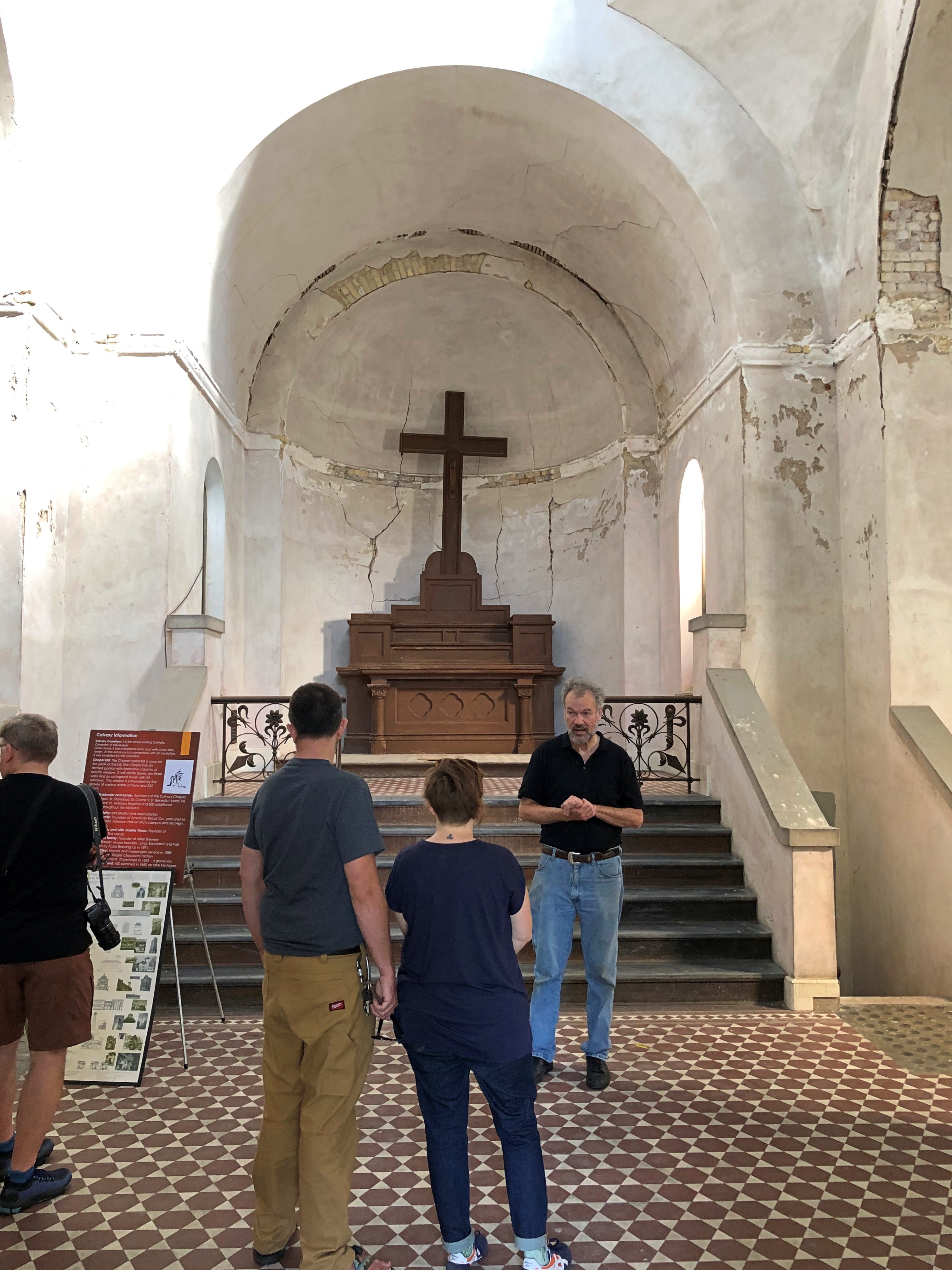
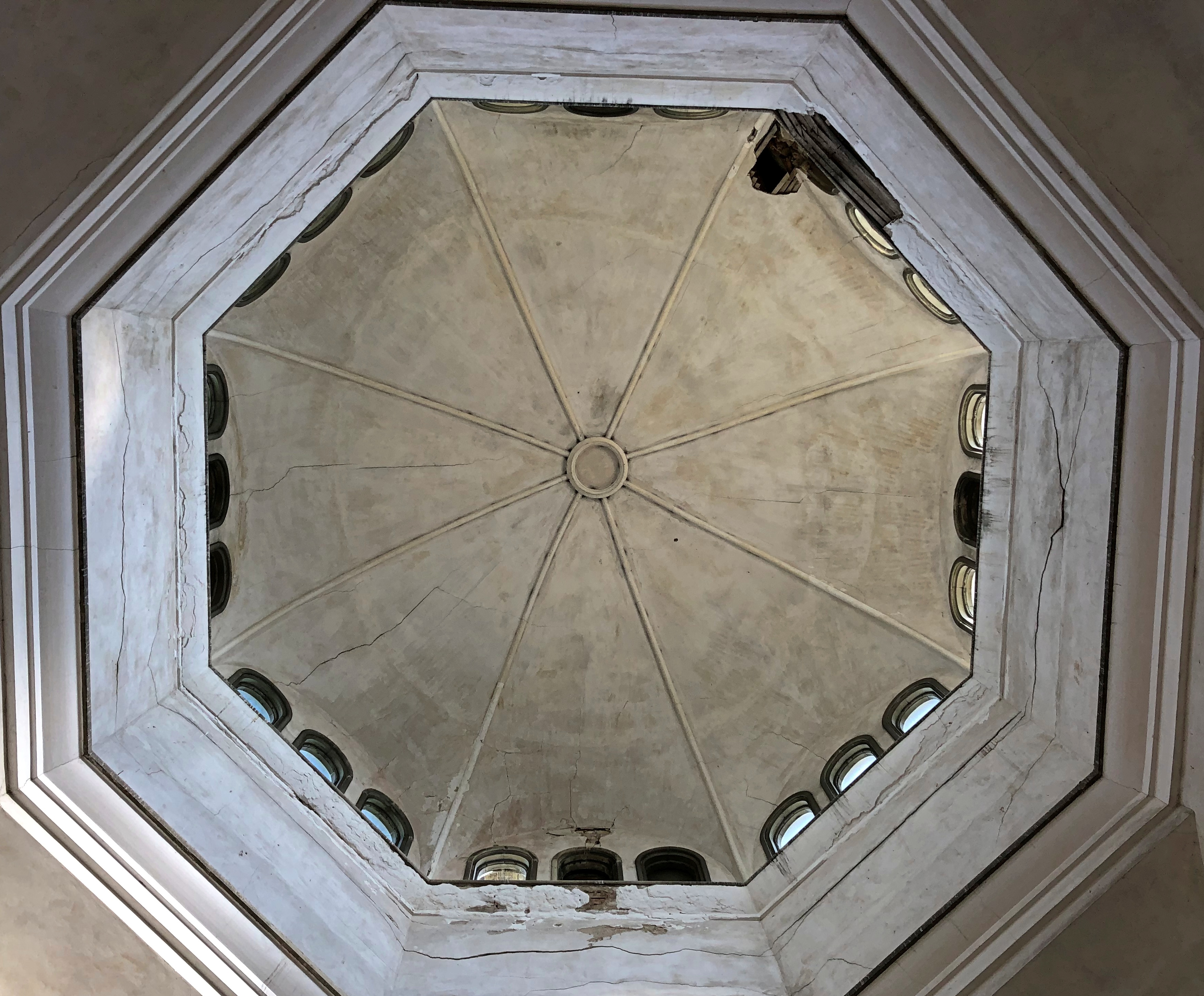
The crypt was dark and crypt-like.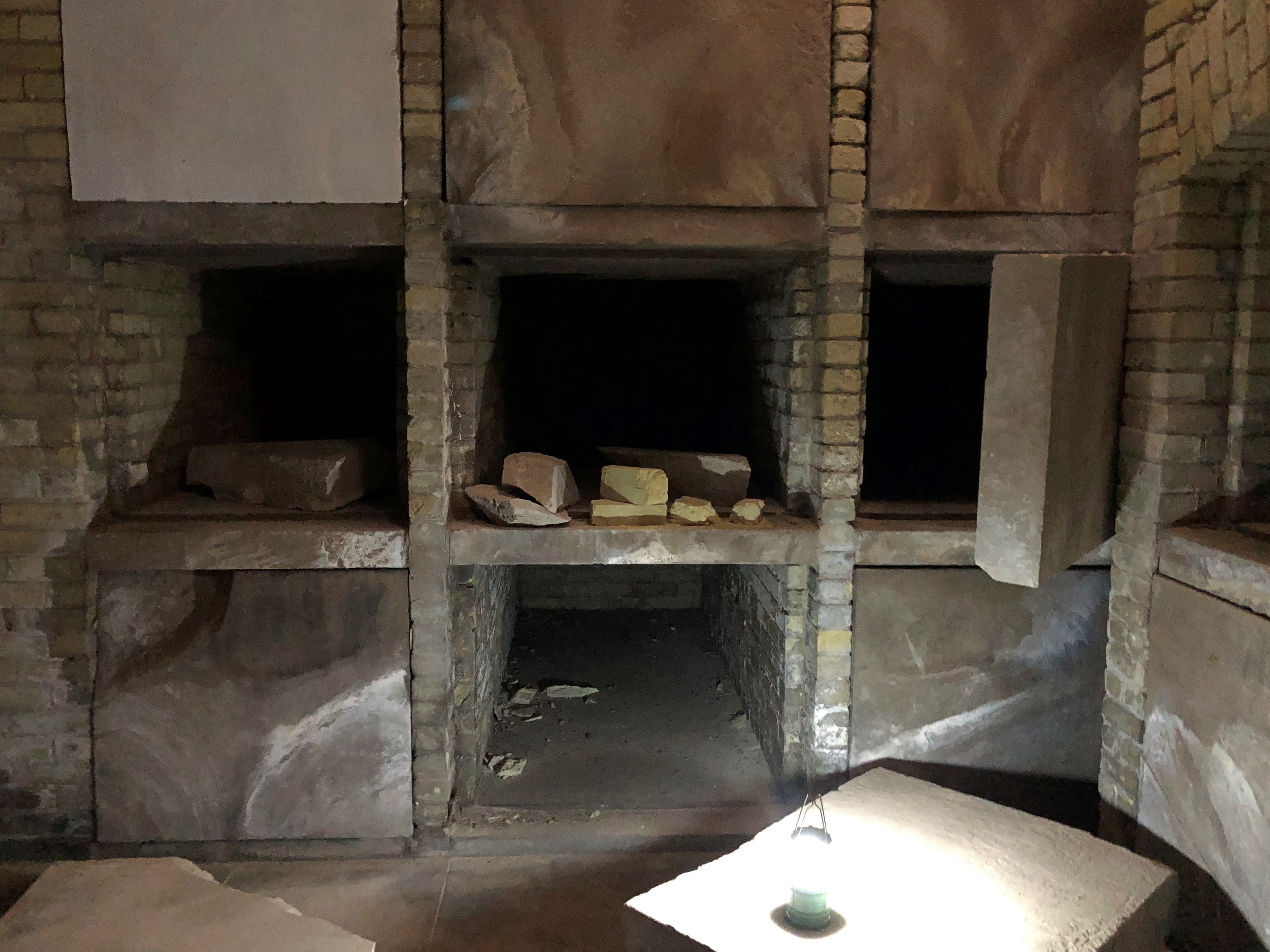
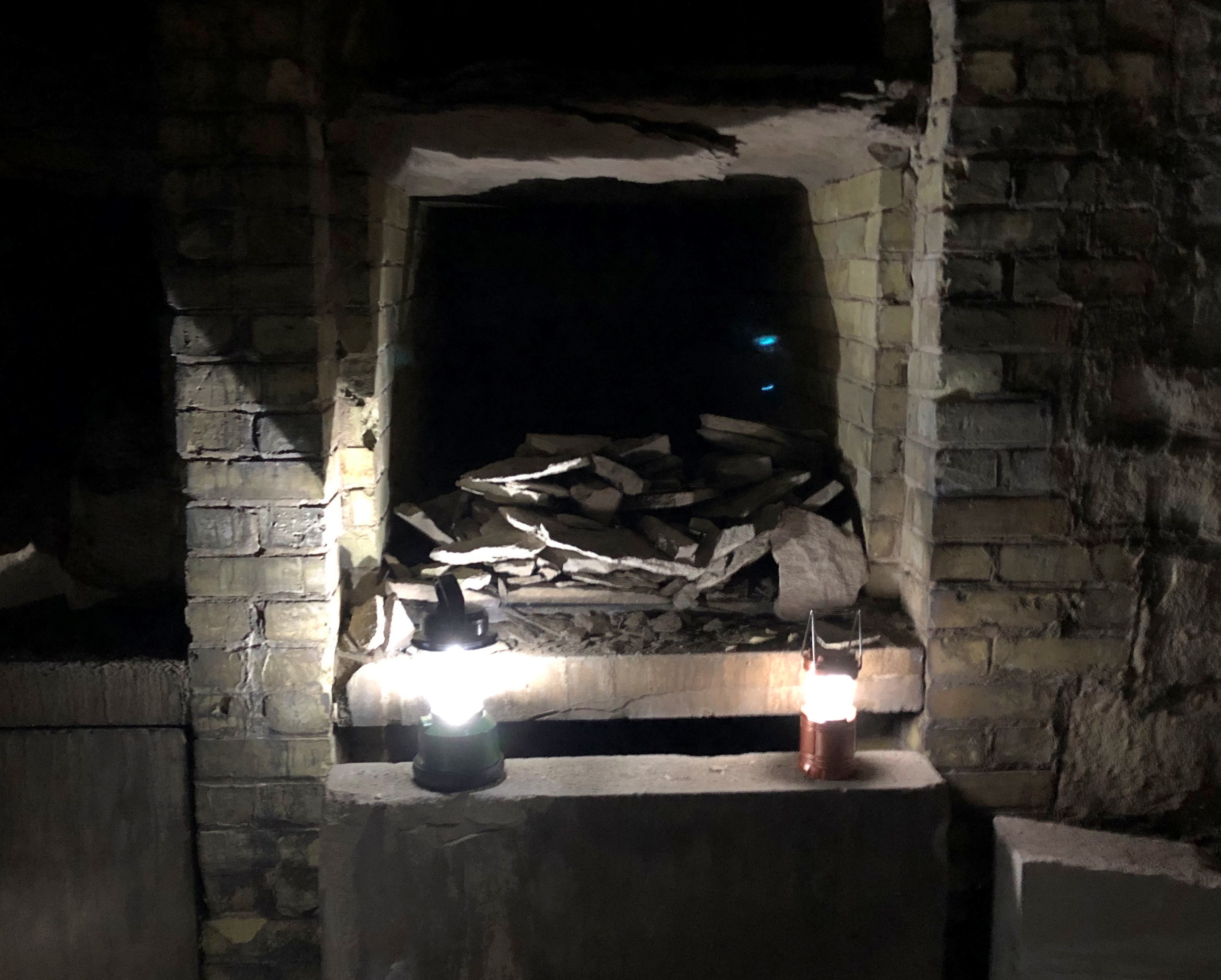
“Originally built intended for services, prayers, private contemplation, and as a mausoleum for clergy, only one clergy member was ever buried at the site,” Historic Milwaukee continues. “The structure has two levels: the upper level features the chapel, with its raised sanctuary and high altar, side altars recessed in twin apses, lofty vaulted ceilings, soaring arches and central dome; the lower level is the bi-level mausoleum containing 45 crypts. Reposing directly beneath the main altar is the body of Reverend Idziego Tarasiewicza, interred in 1903.”
Why just him? The authoritative answer seems to be, dunno. Go figure.